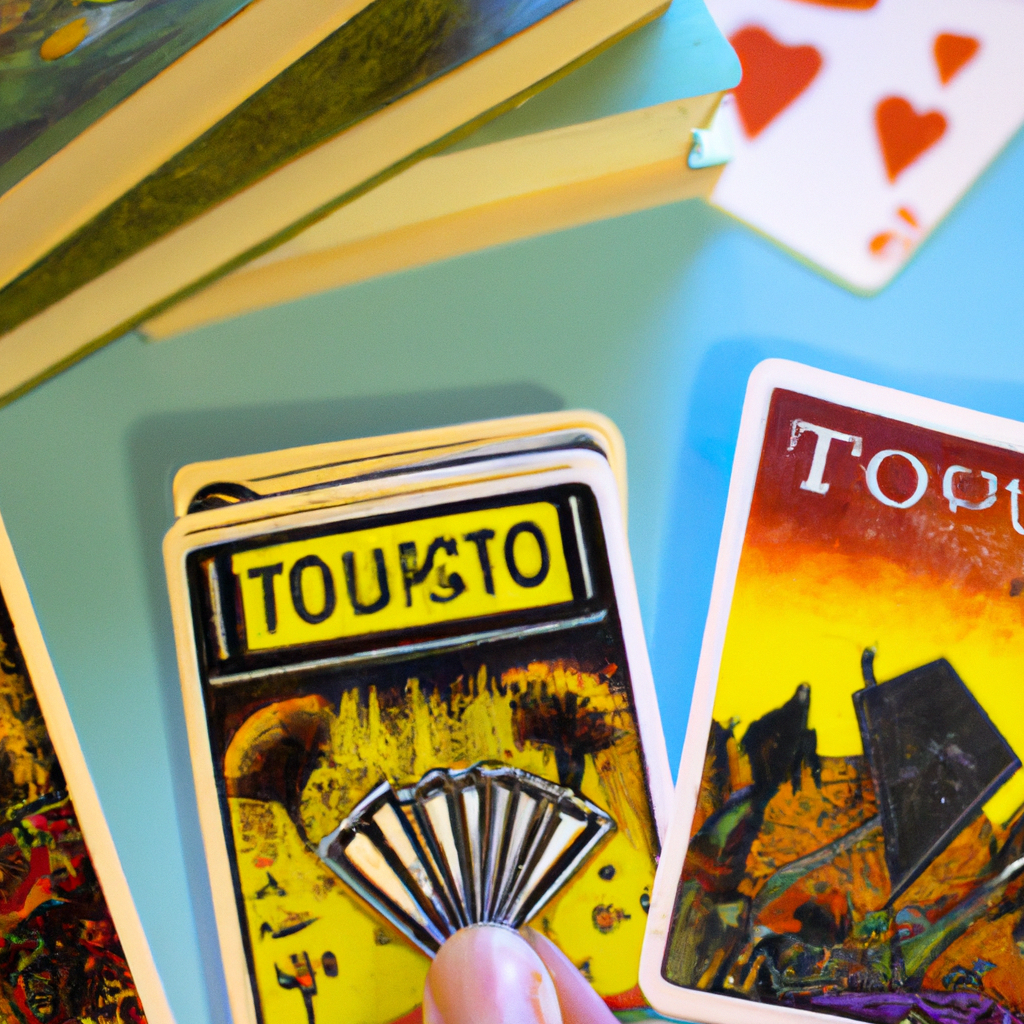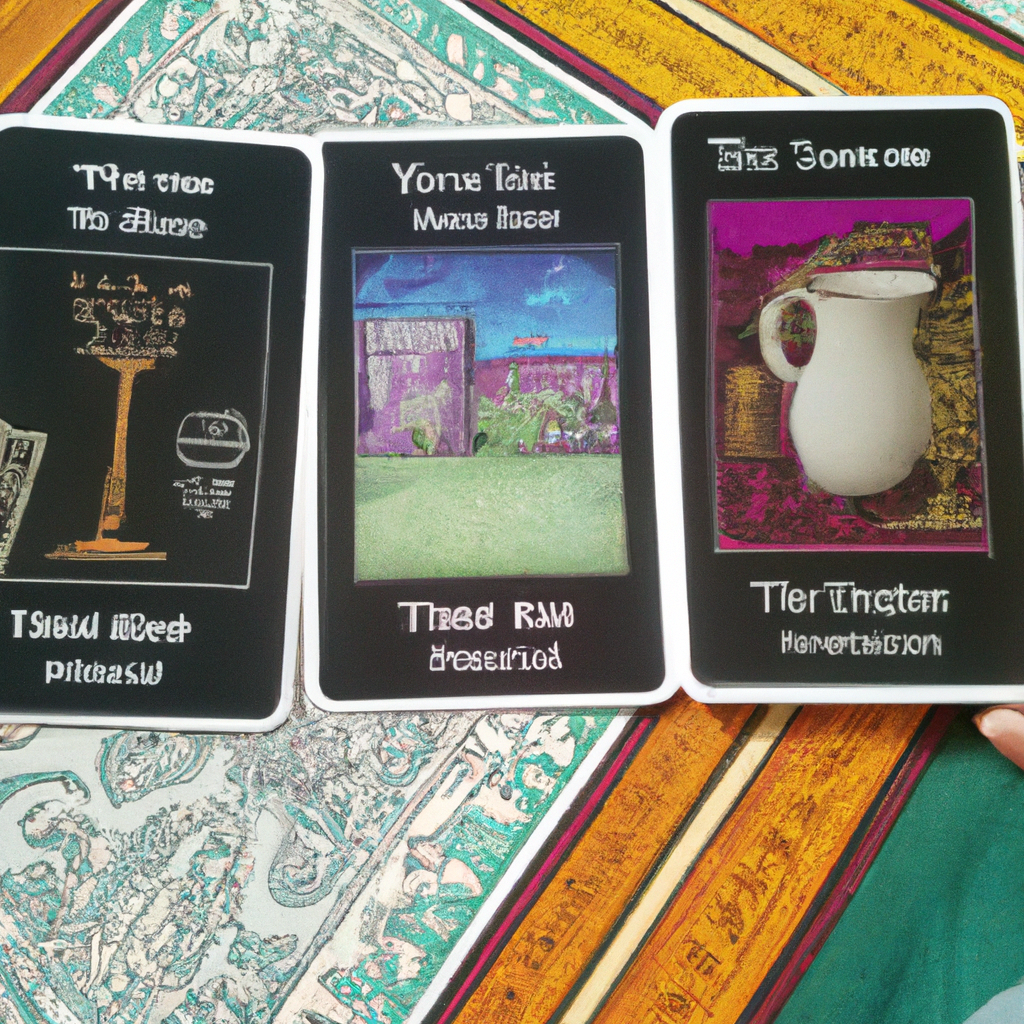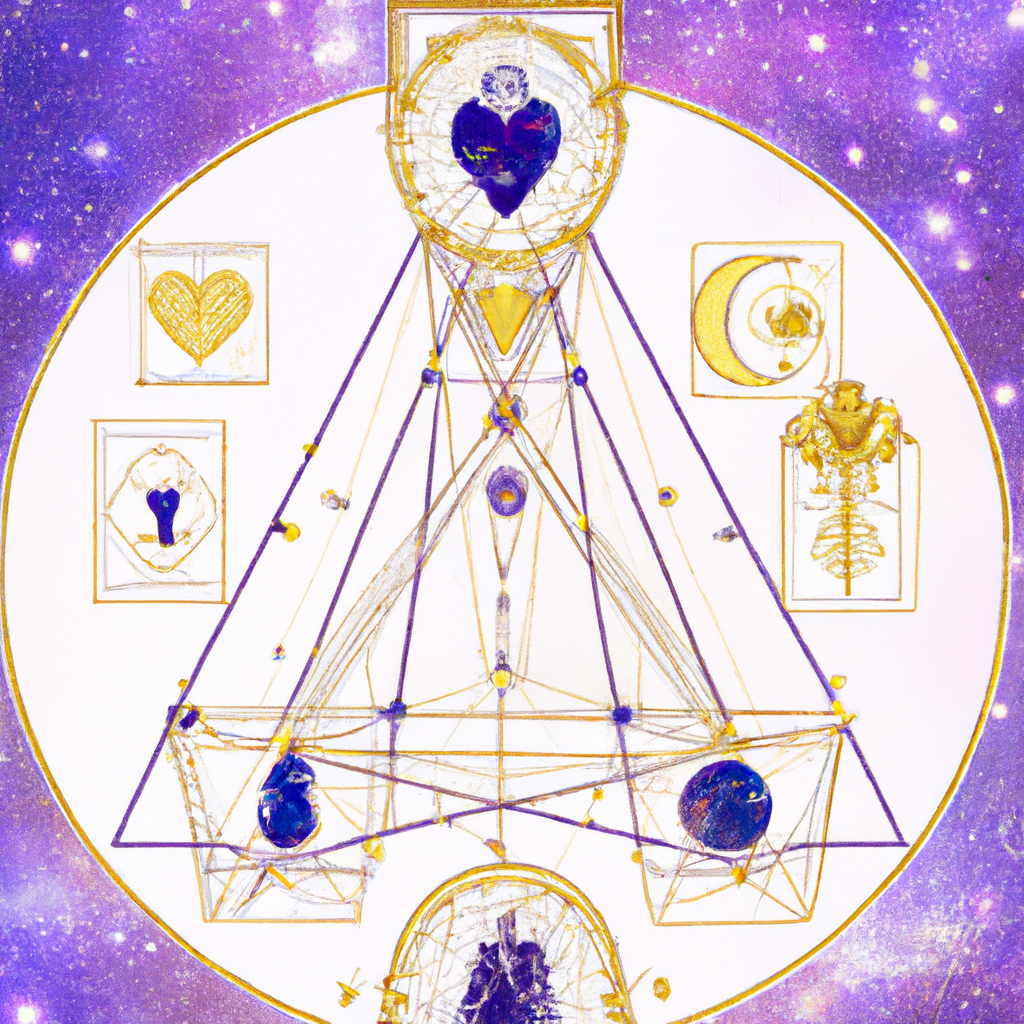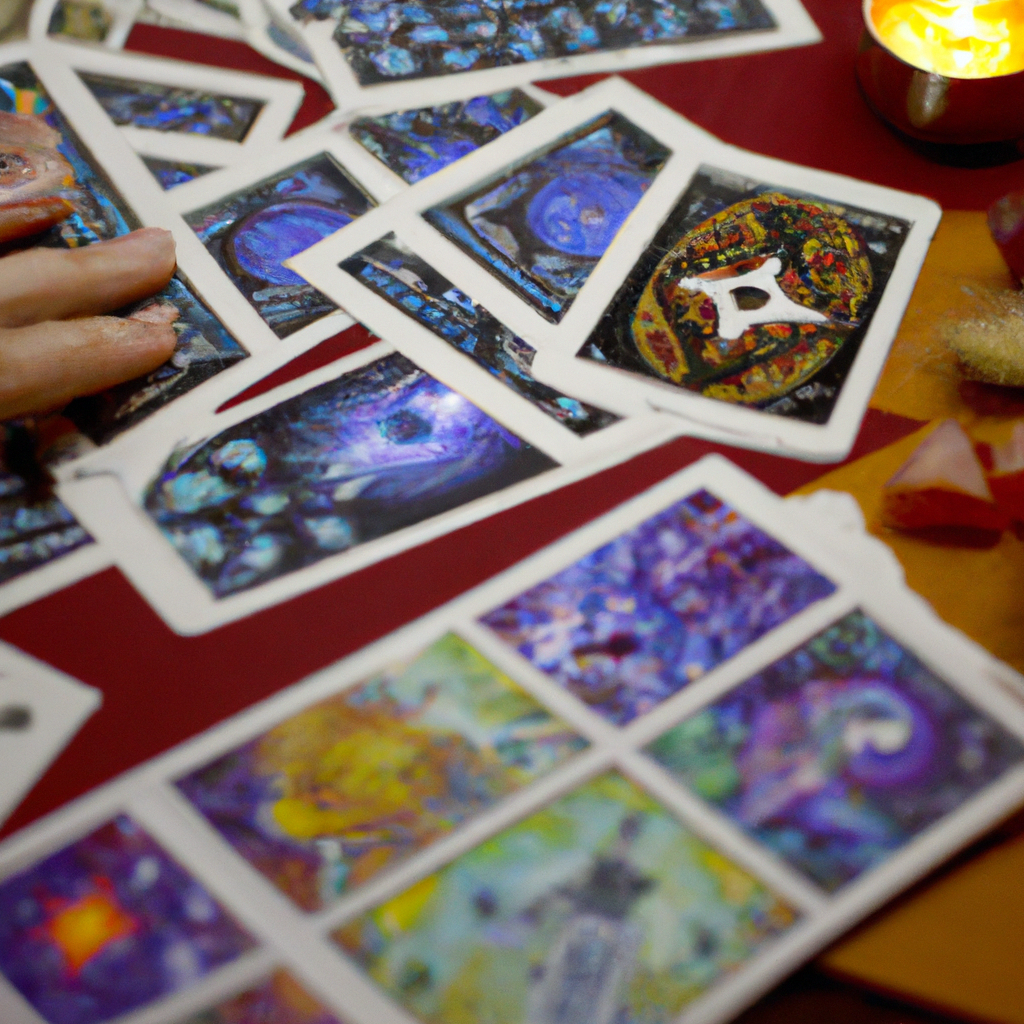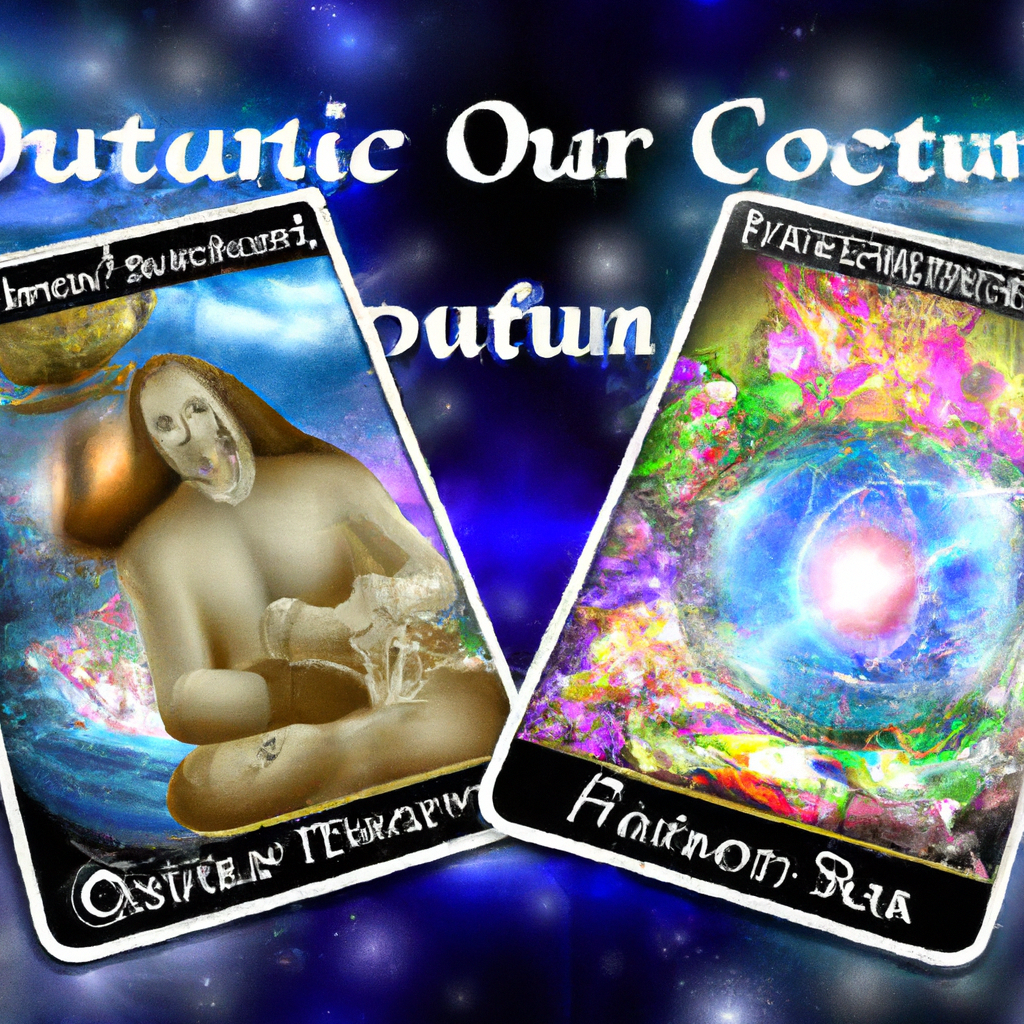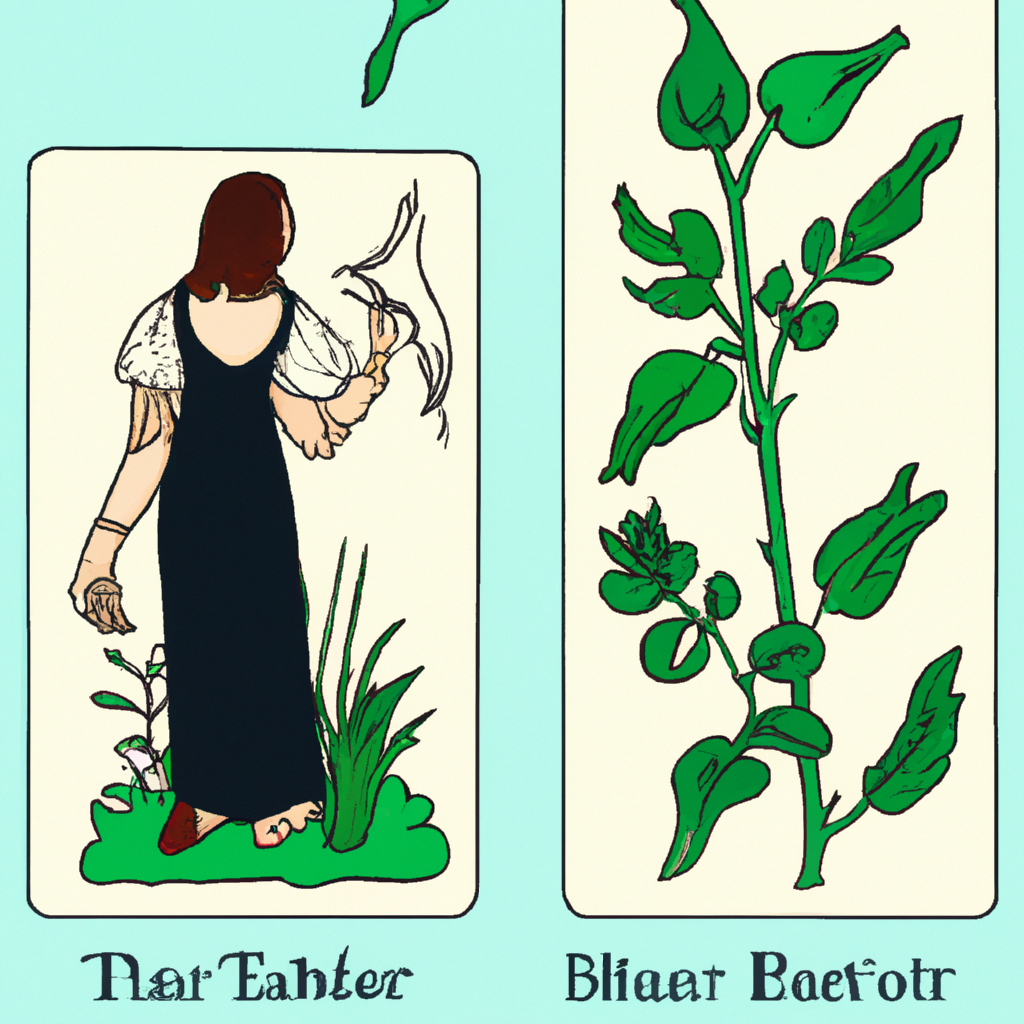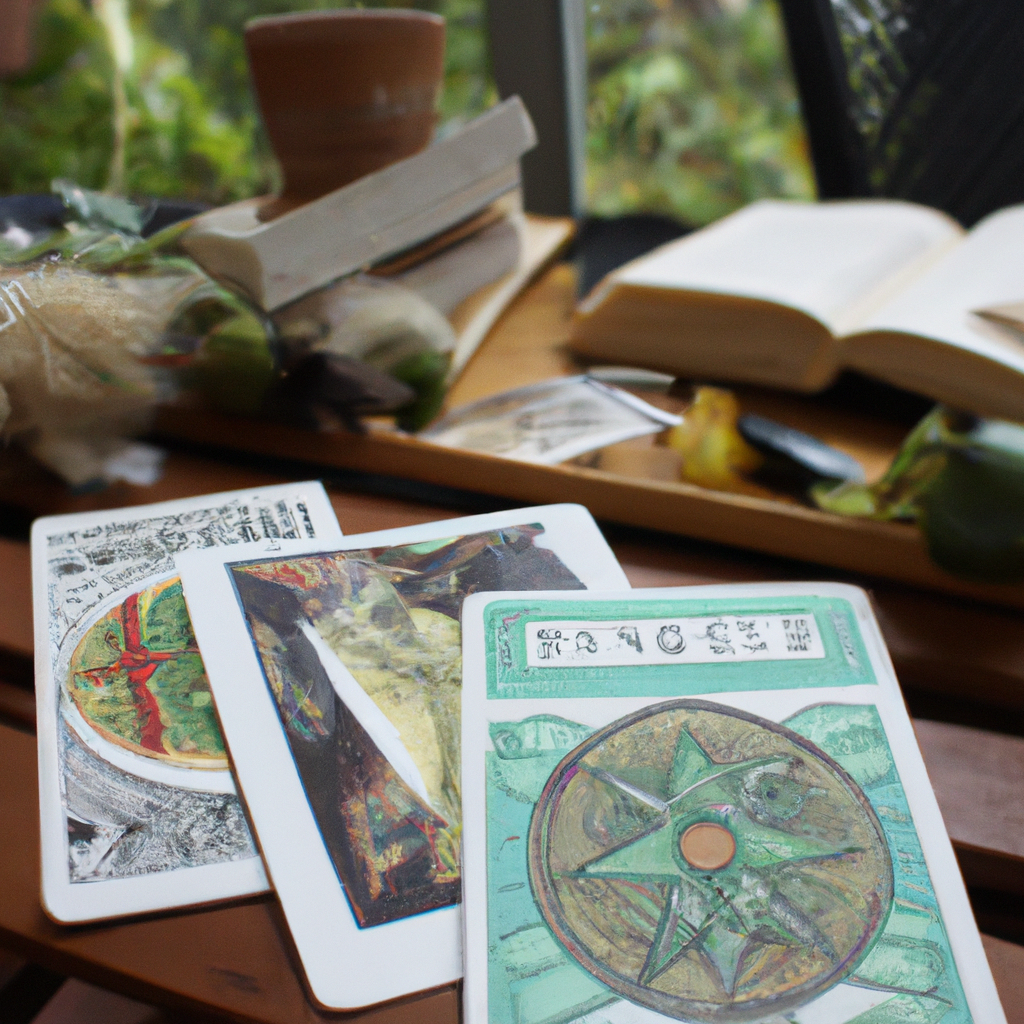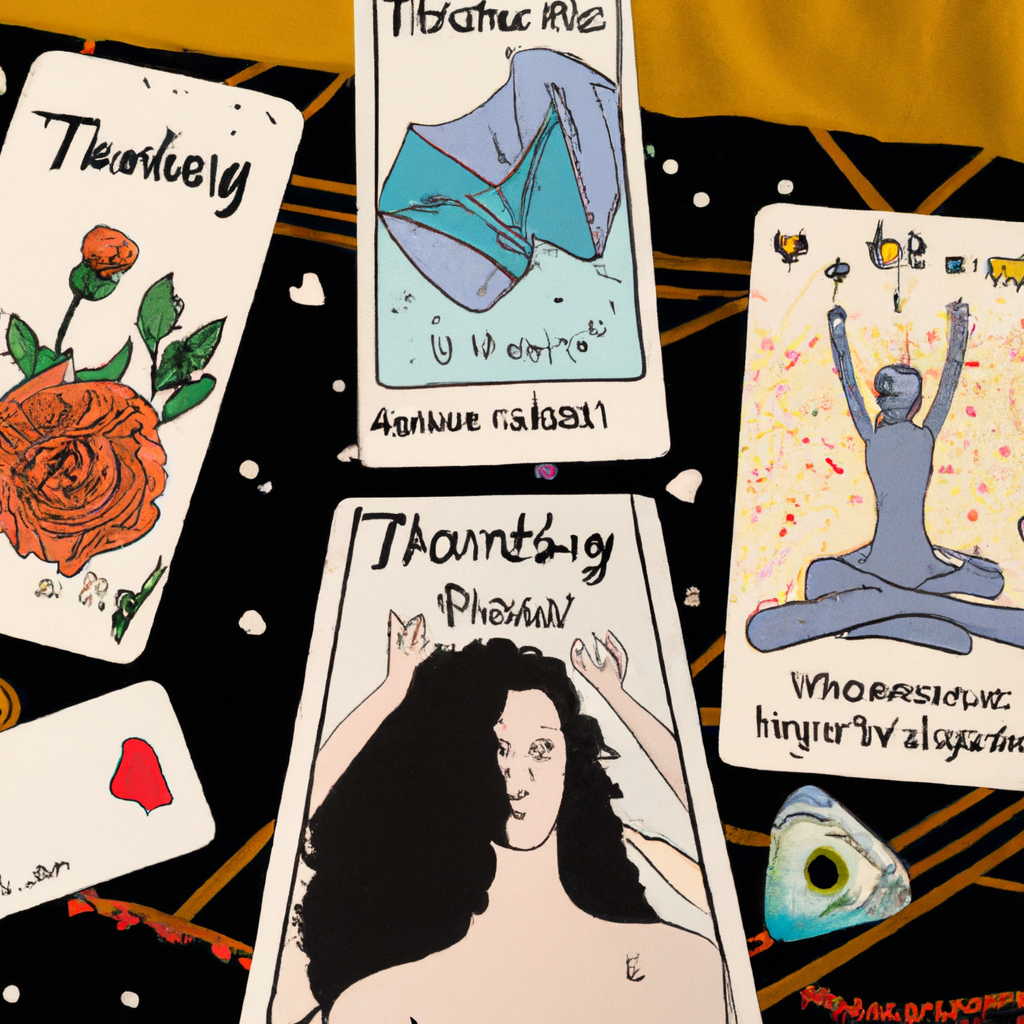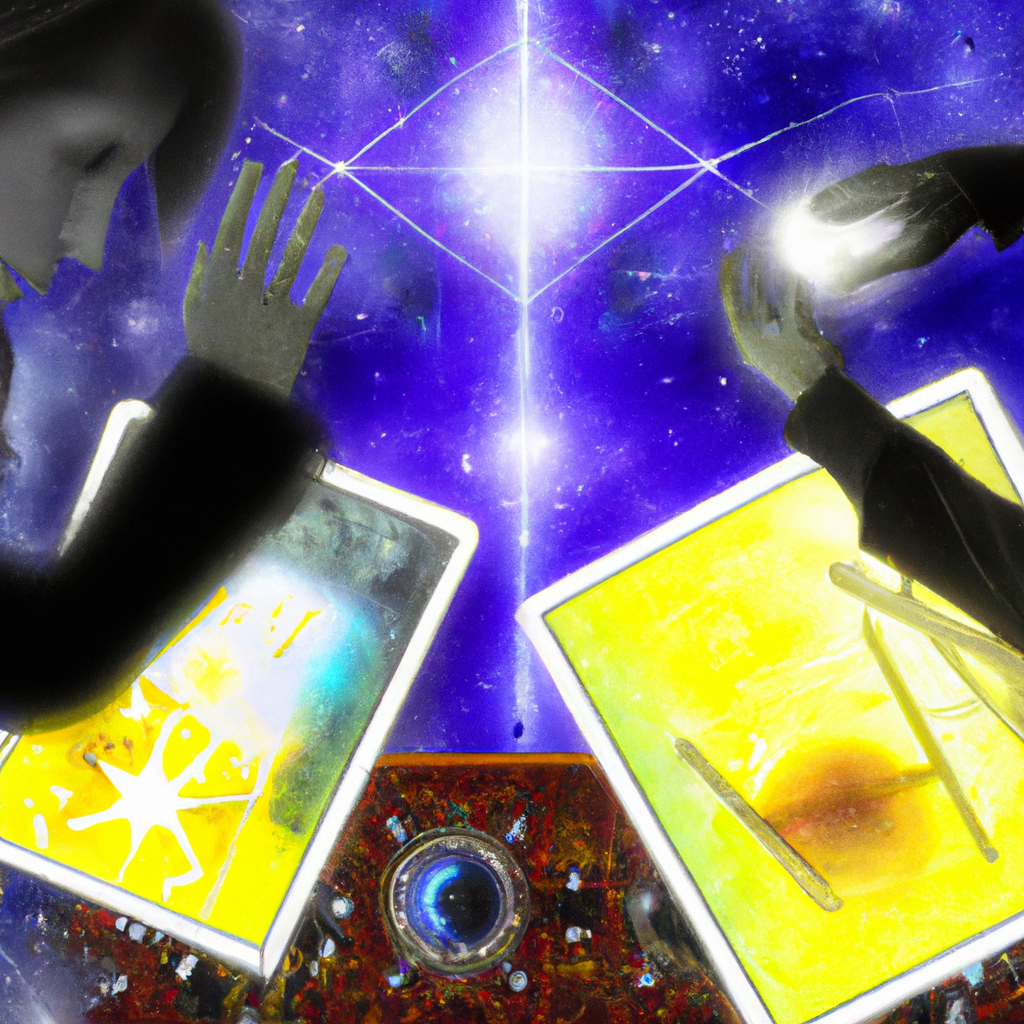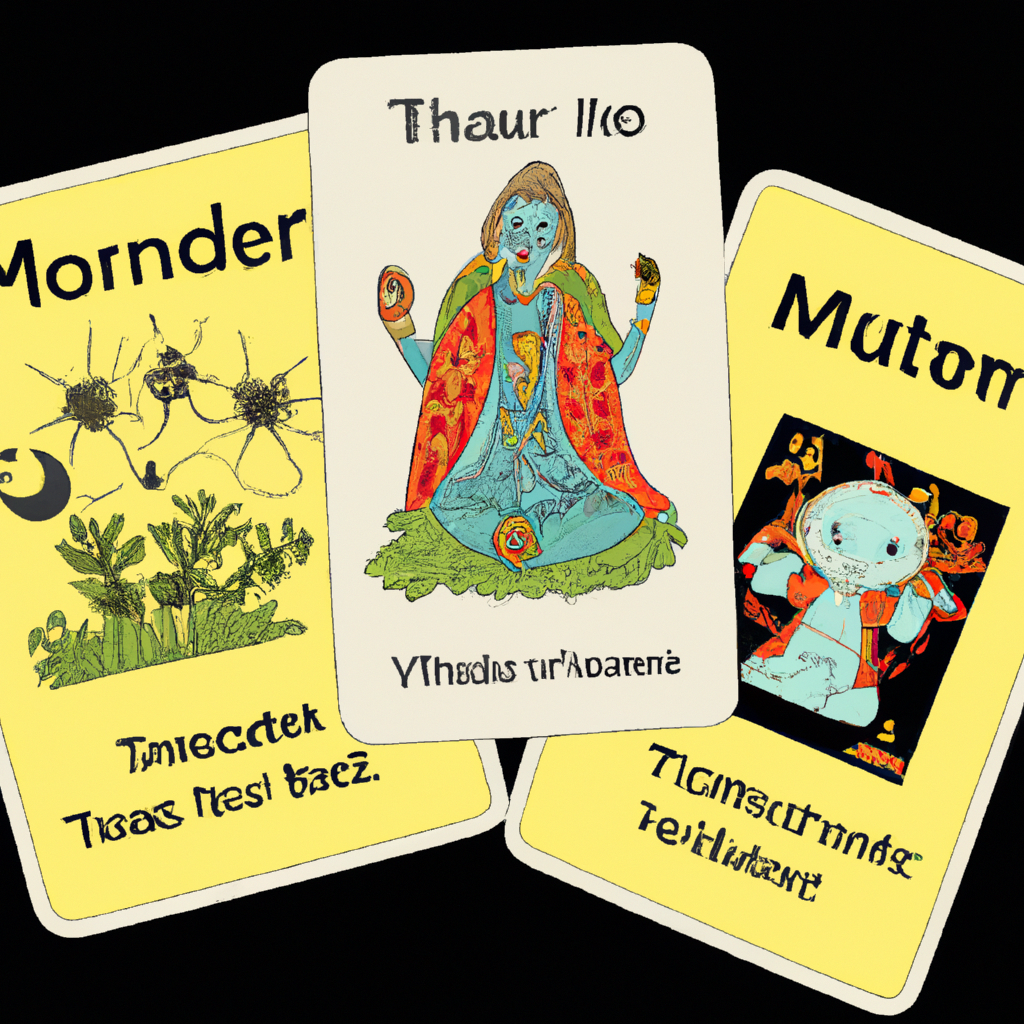Shopping Cart.
No products in the cart.
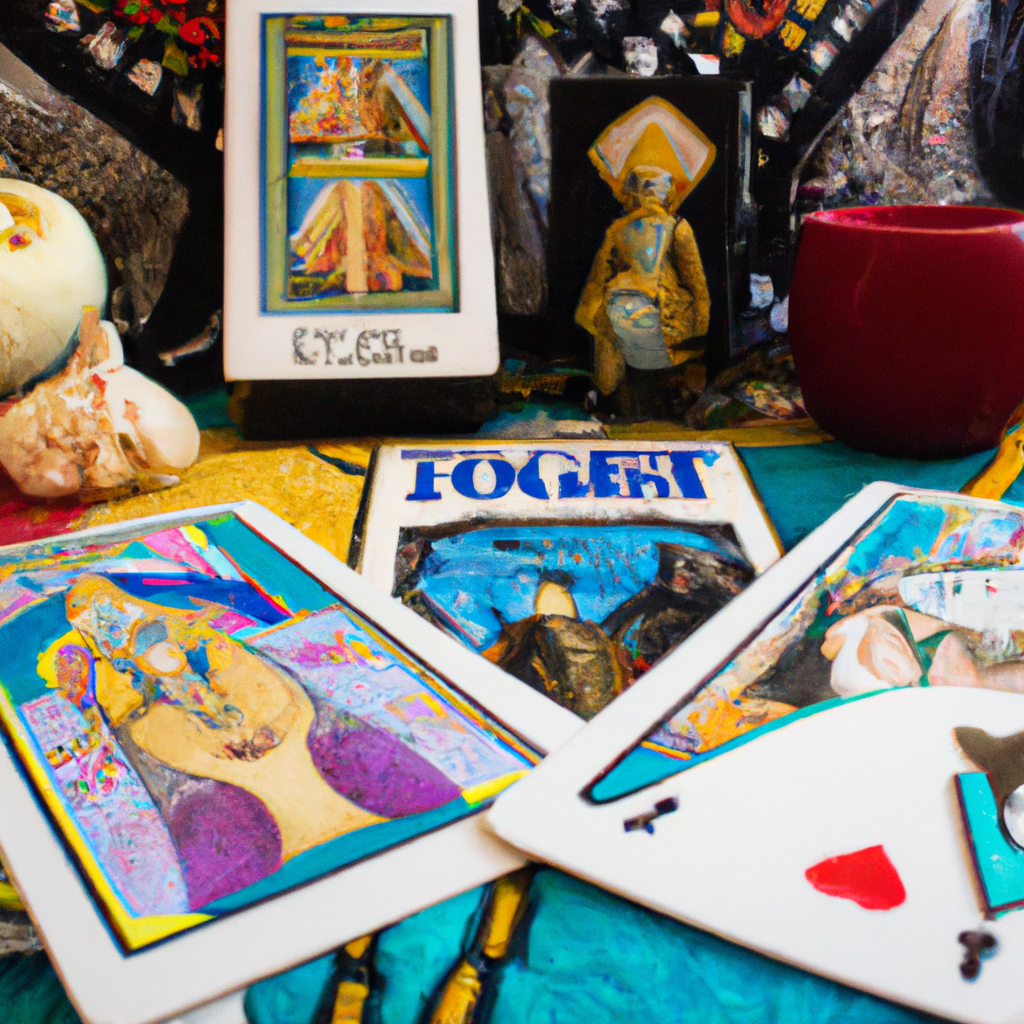
Tarot cards, with their intricate designs and mysterious symbolism, have long been a source of fascination and intrigue. They’ve been used for centuries as a tool for divination, offering guidance and insight into the future. But in recent years, tarot has also found its way into the realm of pop culture, appearing in everything from TV shows and movies to music videos and fashion.
Take, for instance, the popular TV series “Game of Thrones.” In one memorable scene, a character named Melisandre uses a deck of tarot-like cards to predict the future. The cards she draws are eerily accurate, foreshadowing events that later come to pass. This is a classic example of how tarot is often portrayed in pop culture: as a mystical, almost magical tool that can reveal the future.
But tarot isn’t always depicted as a serious, mystical practice. In the hit sitcom “Friends,” there’s a humorous episode where Rachel gets a tarot reading from Phoebe. The reading is full of vague, ambiguous statements that could apply to anyone, poking fun at the idea that tarot can provide specific, personal insights.
Movies, too, have used tarot as a plot device. In the James Bond film “Live and Let Die,” the villainess Solitaire uses tarot cards to predict Bond’s actions and plan her own moves. The cards become a symbol of her power and control, adding an extra layer of intrigue to the film.
Even in animated films, tarot makes an appearance. In Disney’s “The Princess and the Frog,” the character Mama Odie is a voodoo priestess who uses tarot cards to guide her decisions. The cards are depicted as colorful, whimsical, and full of personality, reflecting the film’s vibrant, playful tone.
But what’s really interesting about these pop culture references is how they reflect our society’s evolving views on tarot. In the past, tarot was often associated with the occult and viewed with suspicion. But today, it’s becoming more mainstream and accepted as a form of self-reflection and personal growth.
This shift is evident in the way tarot is portrayed in pop culture. Instead of being shown as a dark, mysterious practice, it’s often depicted as a fun, creative, and even empowering tool. This reflects a broader trend in our society towards embracing alternative forms of spirituality and self-expression.
So next time you’re watching your favorite TV show or movie, keep an eye out for tarot references. They’re more common than you might think, and they offer a fascinating glimpse into how our culture views this ancient practice. Whether it’s used as a plot device, a symbol of power, or a source of humor, tarot has become a staple of pop culture. And as our society continues to evolve, it’s likely that we’ll see even more creative and diverse portrayals of tarot in the future.
In conclusion, tarot’s presence in pop culture is a testament to its enduring appeal and relevance. It’s a fascinating blend of ancient tradition and modern interpretation, reflecting our society’s ongoing fascination with the unknown. So whether you’re a tarot enthusiast or just a casual viewer, there’s no denying the impact of this timeless practice on our popular culture.
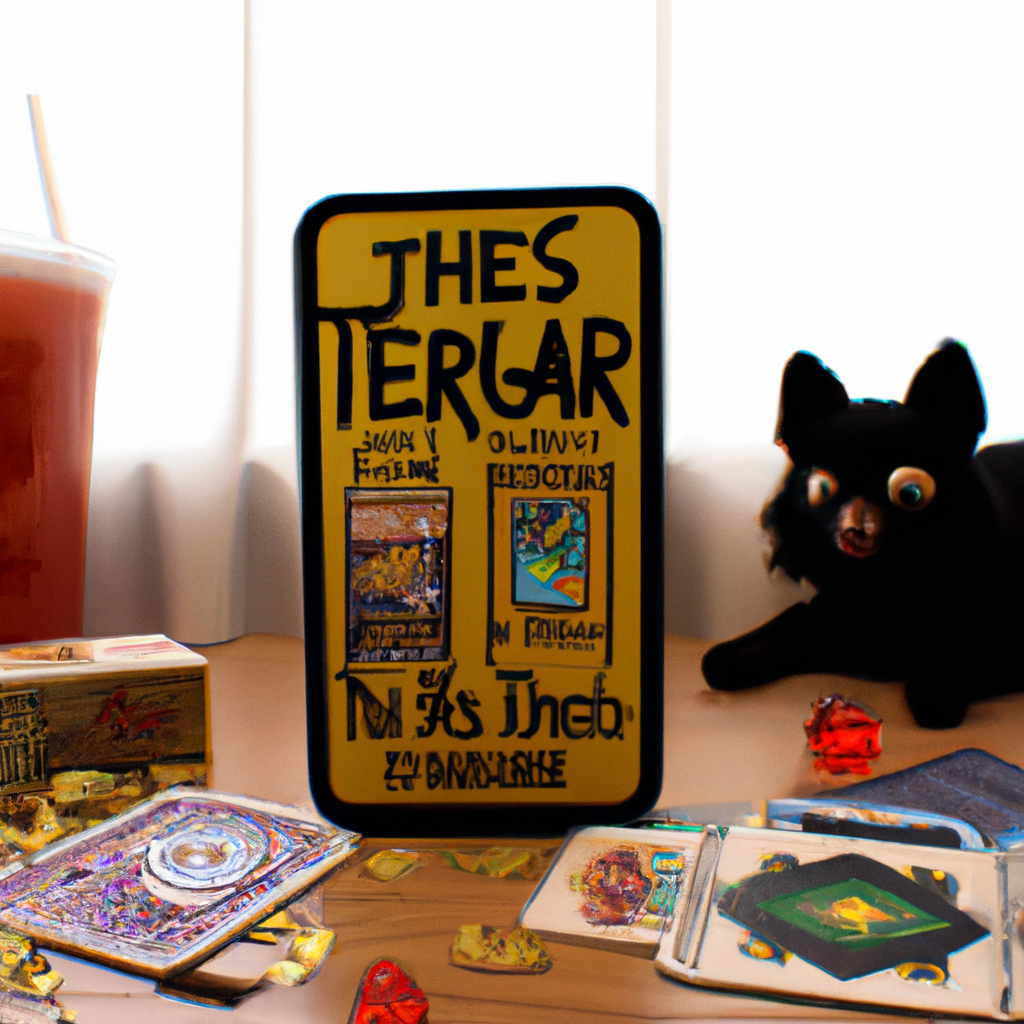
Tarot cards, with their intricate designs and mysterious symbolism, have long been a source of fascination and intrigue. They’ve been used for centuries as a tool for divination, offering guidance and insight into the future. But in recent years, tarot has found a new home in an unexpected place: pop culture. From TV shows and movies to music videos and fashion, tarot’s influence on modern pop culture is undeniable.
Take, for instance, the popular Netflix series “The Chilling Adventures of Sabrina.” The show, which follows the life of a teenage witch, frequently features tarot readings as a plot device. The cards are used to foreshadow events, reveal hidden truths, and even guide the characters’ decisions. The show’s creators have clearly done their homework, as the tarot readings are surprisingly accurate and detailed. It’s a testament to the enduring appeal of tarot, and its ability to captivate audiences of all ages.
But it’s not just in the realm of TV and film that tarot has made its mark. In the music industry, artists like Lana Del Rey and Florence + The Machine have incorporated tarot imagery into their music videos and album covers. Lana Del Rey’s “Lust for Life” album cover, for example, features the singer holding a tarot card, while Florence + The Machine’s “Shake It Out” music video includes a tarot reading scene. These references not only add a layer of mystique to their work, but also reflect the artists’ personal interest in tarot and spirituality.
Even in the world of fashion, tarot has found a place. Designers like Dior and Alexander McQueen have used tarot motifs in their collections, drawing on the cards’ rich symbolism to create unique and eye-catching designs. From dresses adorned with tarot card prints to accessories inspired by the Major Arcana, these fashion pieces are a nod to the enduring allure of tarot.
But why has tarot become such a popular motif in pop culture? One reason could be the rise of spirituality and mysticism in recent years. As more people turn to alternative forms of spirituality, tarot has gained popularity as a tool for self-reflection and personal growth. Its use in pop culture reflects this trend, and helps to normalize and popularize the practice.
Another reason could be the inherent drama and mystery of tarot. With its vivid imagery and cryptic symbolism, tarot is a natural fit for the world of entertainment. It adds a layer of intrigue and suspense, and provides a visual shorthand for complex ideas and emotions.
But perhaps the most compelling reason is the universal appeal of tarot’s themes. The cards deal with fundamental human experiences – love, loss, transformation, and destiny – that resonate with audiences of all backgrounds. By incorporating tarot into their work, artists and creators can tap into these universal themes and connect with their audience on a deeper level.
In conclusion, tarot’s influence on modern pop culture is a testament to its enduring appeal and relevance. Whether it’s used as a plot device in a TV show, a motif in a music video, or a design element in a fashion collection, tarot adds a layer of depth and intrigue that captivates audiences. And as more people discover the power and beauty of tarot, its presence in pop culture is likely to grow even stronger.
Tarot and pop culture have always had a fascinating relationship. From movies to books, the mystical allure of tarot has found its way into various forms of media, captivating audiences with its rich symbolism and intriguing narratives. However, one area that often goes unnoticed is the connection between tarot and music. This unexplored connection is a treasure trove of fascinating insights, waiting to be discovered.
Imagine this: you’re listening to your favorite song, swaying to the rhythm, lost in the melody. Suddenly, a line in the lyrics catches your attention. It’s a reference to ‘The Fool’ or ‘The Lovers,’ and you realize that the song you’ve been humming along to is actually steeped in tarot symbolism. This is not an uncommon occurrence. Many musicians, knowingly or unknowingly, incorporate elements of tarot into their lyrics, adding a layer of depth and mystique to their music.
Take, for instance, the legendary rock band Led Zeppelin. Their iconic fourth album features a song titled ‘Stairway to Heaven,’ which is rife with tarot references. The lyrics speak of a lady who’s sure all that glitters is gold, and she’s buying a stairway to heaven. This lady can be seen as a representation of ‘The Fool,’ who is on a journey, seeking enlightenment and spiritual fulfillment. The stairway, in this context, symbolizes the path of the Major Arcana, leading from ignorance to wisdom.
Similarly, the pop music scene is no stranger to tarot symbolism. Pop sensation Lady Gaga’s song ‘Just Dance’ can be interpreted through the lens of ‘The Star’ tarot card. The Star represents hope, inspiration, and serenity, much like the song’s message of losing oneself in the rhythm of the dance, forgetting worries, and just enjoying the moment.
Even in the realm of rap and hip-hop, tarot makes its presence felt. Kendrick Lamar’s ‘PRIDE.’ can be seen as a reflection of ‘The Devil’ card, which symbolizes temptation and materialism. The song explores the theme of pride as a destructive force, much like the card warns against the dangers of excessive material desires.
But why do musicians turn to tarot for inspiration? The answer lies in the universal appeal of tarot’s archetypal images and narratives. Each card in a tarot deck tells a story, representing different stages of life, various emotions, and diverse experiences. These stories resonate with people across cultures and time, making them a rich source of inspiration for artists.
Moreover, the use of tarot symbolism allows musicians to communicate complex ideas and emotions in a nuanced way. It adds a layer of depth to their lyrics, inviting listeners to delve deeper and explore the hidden meanings. It’s like a secret language, shared between the artist and the audience, enhancing the overall listening experience.
So, the next time you listen to your favorite song, pay close attention to the lyrics. You might just stumble upon a tarot reference, adding a whole new dimension to your listening experience. And who knows, you might even be inspired to explore the world of tarot yourself, uncovering the mysteries and wisdom it holds. After all, as the saying goes, ‘Music is what feelings sound like,’ and tarot is a mirror to our soul. Together, they create a symphony of emotions, guiding us on our journey through life.
In conclusion, Tarot and pop culture have a significant relationship, with references to Tarot appearing in various forms of media, including films, TV shows, books, and video games. These references often use Tarot symbolism to add depth to storytelling, character development, and thematic elements. Despite the varying interpretations and understanding of Tarot, its influence in pop culture underscores its enduring appeal and cultural significance.
